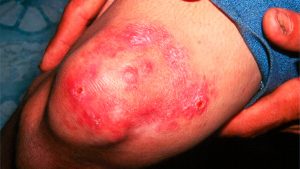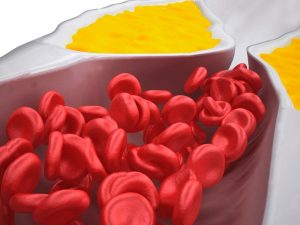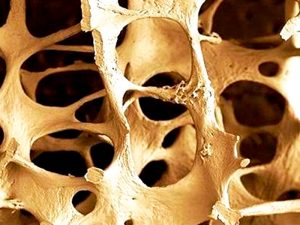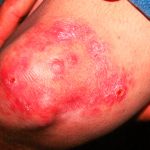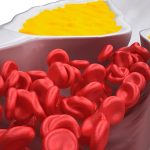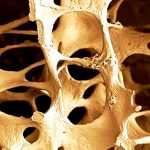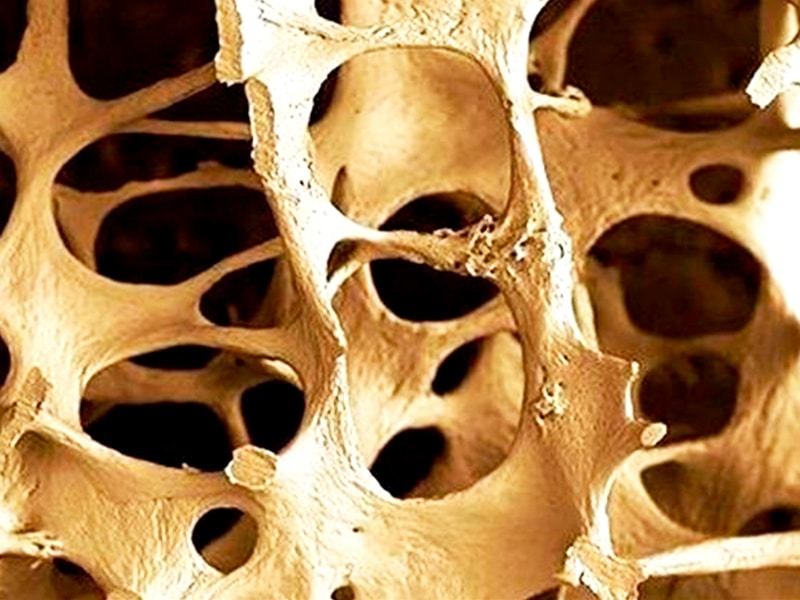Dry, red and itchy skin – atopic dermatitis (AD) is becoming more frequent. For this reason, maintaining good skin care even if there aren’t symptoms advisable.
AD is also known as disseminated neurodermatitis, Besnier’s prurigo, infantile eczema, atopic eczema or endogenous eczema. It is a chronic condition of the skin that presents intense itching, dry skin, inflammation and sometimes eczema. Atopic dermatitis affects all races and most often women. In fact, prevalence in the United States is around 17 per cent of the population. It can appear at any age but it predominates in childhood, and is more frequent in children younger than five years.
In 60 per cent of cases it starts in children in their first year and in 85 per cent of cases before the age of five. It persists in adulthood in 60 to 70 per cent of patients and, of course, the prognosis is more favorable in those who were diagnosed in the first life of year.
This disease causes dry skin with little water and fat due to cells released into the skin in an uncontrolled way. To identify if you have atopic dermatitis, carefully observe your skin. If it is dry and reddish, you will most likely have atopic skin, but it can be treated to reduce the symptoms.
It is important to understand skin and know about conditions it can develop to give it the best care possible.
What Causes Atopic Dermatitis?
The leading cause is the uncontrolled release of a molecule called immunoglobulin E (IgE). This molecule activates cells called basophils and mast cells when a person’s immune system detects invasive agents, allergens or certain infections.
Basophils and mast cells, after being activated, release a substance known as histamine, which can produce a series of manifestations such as itching, redness and rashes.
Other factors promoting atopic dermatitis include:
- Genetic predisposition.
- Immunological alterations.
- Vascular problems.
- Alterations in barrier function.
Atopic Dermatitis Symptoms
The most common signs are:
- Dehydrated skin and itching (pruritus), which can be very intense.
- Skin may be inflamed and red.
- Erosions or small lumps on the skin, which can release liquid with scratching.
- If chronic eczema develops, skin may appear very thickened, cracked and dry. This occurs mostly in adults.
- Exposed injuries on the skin because of scratching when dermatitis becomes severe.
- Changes in skin color.
- Both the type of erosion and the place where it appears may depend on the age of the person: In children younger than two years old, skin lesions begin on the face, scalp, hands and feet. The rash on older children and adults is most commonly on the inner part of the knees and elbows. It can also appear on the neck, hands and feet. In adults, the rash may be limited to the hands, eyelids or genitals.
Atopic Dermatitis Treatment
Unfortunately, there is no cure for AD. The objective of treatment is to control outbreaks, mitigate itching and keep the skin hydrated. Treatment can include:
Topical
Topical corticosteroids (cream or lotion) are the basis of treatment for eczema at the time of an outbreak. When using topical therapies, remember these points:
- Application must be several times a day since increasing hydration will lower the sensation of itching at the time of an outbreak. Then, less corticosteroid will be needed.
- You will have to change the moisturizer as dermatitis changes state.
- After showering, hydrate the skin with moisturizer by applying all over the body, because eczema can develop at any time and on area.
- When drying skin, do it gently, to avoid skin reactions.
- When applying topical treatment put on a small and well-extended quantity; it will make absorption easier.
Medications
Oral medications can help, always consulting a doctor. Those include:
- Antihistamines which can help reduce itching or allergies.
- Antibiotic pills if your skin becomes infected.
- Drugs that suppress the immune system.
- Other alternatives are systemic steroids for a short time (steroids administered orally or through a vein).
Allergy and Atopic Dermatitis
When atopic dermatitis does not respond well to treatment, it could be allergic contact eczema – that is, an allergy to an object, food, lotion or a specific thing. It is a difficult diagnosis since it is complicated to differentiate between chronic eczema and contact eczema when both coexist. However, it can be a very practical diagnosis when you find the cause of contact allergy and eliminate it, and after that, eczema improves. Allergic contact eczema can come from various sources, such as:
- Nickel contained in metals used to make fantasy jewelry, glasses’ components and mobile phones.
- Preservatives in wipes, cosmetics and hygiene products.
- On rare occasions, components in cosmetics, such as perfumes and sunscreens.
- Essential oils of some cosmetics known as “bio”, which offer no hypoallergenic guarantee.
- Clothing items, due to some fabrics (not common).
- Dermocorticoids can cause an allergic reaction.
Atopic Dermatitis on the Face
A particular variant of eczema has been identified as a condition that appears exclusively or predominantly on the face and neck. The appearance of “head and neck dermatitis” requires more sensitive treatment because facial skin is more delicate than the rest.
Facial atopic dermatitis can affect any age and appears as dry and scaly areas on the scalp, forehead, behind the ears and around the eyes.
Certain medications can lead to photosensitization which is the result of an interaction between ultraviolet (UV) radiation and a sensitive substance that is in the skin. Photosensitization is rare in atopic dermatitis but it is better to rule it out first. Additionally, there is an innovative treatment based on UV light, phototherapy in which the skin is exposed carefully to ultraviolet (UV) light.
Atopic Dermatitis in Babies
If there is a family history of dermatitis, especially if the mother suffered it, a baby is very likely to develop dermatitis. However, it can look more severe than it is. When eczema appears in babies, it starts with seborrhoeic eczema and eventually develops into atopic eczema. Eczema in babies commonly affects the:
- Face
- Trunk
- Limbs
Eczema usually appears as plaques or red patches with edema (swelling) which, due to scratching, can become infected. Eczema in infants often disappears before they are one and a half years old.
Atopic Dermatitis in Adults
Atopic dermatitis in adults is usually severe, with chronic eczema plaques, red, thick and lichenified (extremely dry and hard skin). It can appear on the hands, arms, face and eyelids, which is one of the most affected areas. Persistent scratching causes abrasions and cracks that can hurt.


